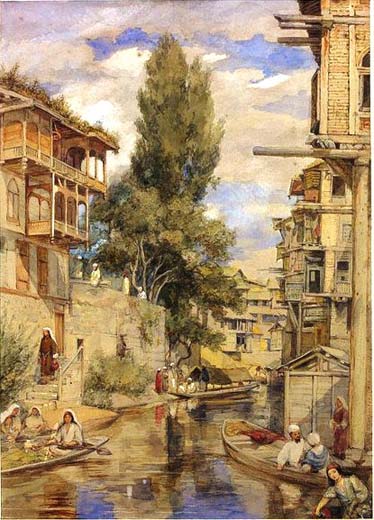A canal coming from Ganderbal would once supply water for ablutions at the Jamia Masjid in Srinagar, and feed fields in its path. Hardly any remains of its elevated embankments are left today. Abdul Mohamin traces its path.

Considered obsolete more than a century ago, a canal with elevated embankments would run through Pandach via the present 90-feet-road traverse through Nowshera, the new capital laid by Budshah, and culminate at Jamia Masjid.
Former, Chief Engineer Public Health Engineering Department (PHED) Abdul Rashid Mir said the canal was laid to serve for both ablution and drinking purposes at Jamia Masid and in its path it would also be used for irrigation.
Mir said that Budsah reign was credited with great advancements with regard to channelization of water resources and this canal was one such great feat.
Irrigation and Flood Control Department (IFCD) officials say that the Padshahi canal, as it is now known, runs upto Pandach and is still in use in more than 23 villages. Ghulam Mohammad Parray, a resident of Pandach and an employee with the department said that his father had told him about the importance of this canal that had a branch extending up to Nowhatta (Jamia).
The canals are still considered an important one by IFCD employees, but say that the encroachments and depletion of agricultural land due to housing needs has resulted in vanishing of these canals.
Muhammad Younus, a resident of Soura said that the canal was functional till eighties as was used to irrigate an orchard, Auquaf Bagh, near the present Dumuth (Dome structure) – a Sultante period monument.
“There was a massive orchard and a water tank lined with stones near this monument that was fed with this erstwhile water supply,” Yunus said. The orchard vanished and the dome survives among a cluster of newly constructed houses.
Mir said that present day Soura was a wheat growing area and up ahead (towards Pandach) people would prefer growing rice. A proper irrigation network existed including this elevated canal which was vandalized, as people started to excavate its tree lined embankments.
“It was later planned to lay a four lane road besides a 25 feet wide corridor to lay pipes for the Rangil Water supply scheme to meet the water requirements of city,” he said.
Commending the engineers of that period, Mir said, “Looking at their developments, it seems that they had well developed knowledge in hydrology and that is how they could tap water towards present day Nowhatta.”
“It could not have been an easy task to use gravity principle to channelize water, as the canal would require to cross across , elevated areas and natural depressions and many such paths in between, and use of crossing structures such as flumes –an open wooden or metal canal supported by pillars, culverts an underground passage for water was necessary, to accomplish this task,” he said adding that wooden flumes carved from deodar logs have been in use since long in Kashmir and they could have been used in its course.
The present day engineering uses similar technique though different materials to overcome gradient woes in laying canals.















